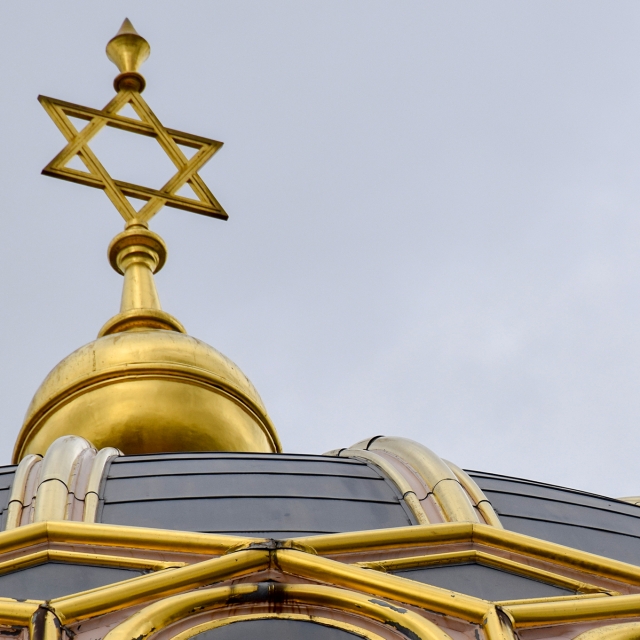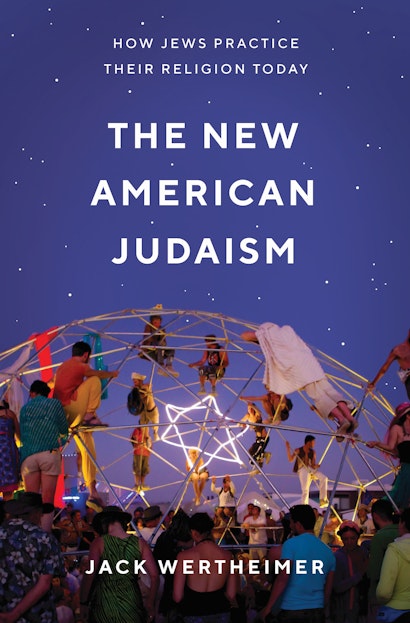American Judaism has been buffeted by massive social upheavals in recent decades. In The New American Judaism, Jack Wertheimer, a leading authority on the subject, sets out to discover how Jews of various orientations practice their religion in this radically altered landscape. What emerges is a quintessentially American story of rash disruption and creative reinvention, religious illiteracy and dynamic experimentation. Here, Wertheimer provides insight on why and how he wrote the book, and what readers of all faiths can learn from it.
What led you to write this book?
JW: Twenty-five years ago, I published a book offering my take on contemporary Jewish religious life. When I revisited that book in recent years, I realized an entirely different approach, not merely an update, would be needed to do justice to today’s scene. I also was curious to learn more about the proliferation of new settings for Jewish religious expression and the remaking of existing places for congregating.
You interviewed 220 people for this book. How did you decide whom to interview and what questions to ask?
JW: I mainly interviewed rabbis situated in different corners of Jewish life, and then turned to other observers to help me understand new developments. My overall questions were straightforward: What are you seeing among the Jews in your orbit when it comes to religion? And what are you doing to draw Jews into religious life? From there, the questions led us down fascinating byways. I learned about the re-appropriation of long-discarded Jewish religious traditions, and creative efforts to engage attendees at religious services; about the self-invented forms of Jewish practice taken for granted by some Jews and also the return to traditions by others. I heard about startling religious practices one would not have seen in synagogues even twenty years ago, and also learned of Jewish religious gatherings in unlikely places.
So what is new about the new American Judaism?
JW: I could be flip and answer: “that’s why you have to read the book.” But to begin addressing the question, I’d say the environment in which American Jews find themselves is new. In some ways, it is remarkably open to all religious possibilities—or none; in other ways, American elite culture is highly dismissive of religion in ways that was not the case but a few decades ago. This has further eroded what Peter Berger called “the plausibility structure” for religion. Jews in our time are less likely than in the past to regard their religion as a package of behaviors and, as the old saw put it, “a way of life.” Now religious settings have to contend with Jews who wish to connect only episodically and only on their own terms. This has led both to religious participation as a “sometime thing” for many Jews, and simultaneously has spurred a great deal of experimentation to create enticing religious environments in the hope of drawing more participants. Congregations of all types are reimagining the use of space, the choreography of prayer service, the impact of music and visual cues, the ways they extend hospitality and mutual support to fellow congregants, and the messages they deliver about how Jewish religious practice enriches one’s life.
Is all of this unique to Judaism?
JW: Not at all. One cannot really understand Jewish religious developments in a vacuum. Even the seemingly most insular of Jews who deliberately live in their own enclaves cannot escape the impact of the powerful culture all around us. (One of the rabbis I interviewed put this colloquially when he said: “culture eats mission for breakfast”—i.e. it overwhelms religious ideology.)
Many internal Jewish developments described in this book are quintessentially American (though some have parallels in other countries). New ways of thinking about religious experiences can be found in American churches, mosques and synagogues. Religious leaders across the spectrum recognize that they face common challenges, such as the well-documented retreat from institutional engagement, the quest for spirituality among some, the disenchantment with religious leadership, the DIY mindset when applied to religion and the desire for a more engaging worship experience. Experimentation is a hallmark of American religious life, as it is in many Jewish religious institutions.
Can you talk about one challenge you faced in your research?
JW: There are a great many ways Jews practice their religion. One challenge facing anyone attempting to survey the scene is how to capture American Judaism in all its complexity and variety. To be clear, the term Judaism is used in many different ways. Some see it as synonymous with all of Jewish life. Others as the expression of a distinct theology and package of do’s and don’ts. The book endeavors to examine how “average” Jews incorporate Jewish religious practices into their lives, what they believe, what in their religion is important to them, and what is available to those who seek out Jewish religious settings.
A lot of people are pessimistic about the future of American Judaism. Do you agree with them?
JW: A lot of people are pessimistic about the future health and vitality of Jewish life in this country. Some also worry about the long-term future of this or that denomination of American Judaism. There are good reasons to worry about both. But given the explosion of creativity in the Jewish religious sphere, I don’t worry about the future of Judaism. It’s the adherents, the Jews in the pews or those who rarely show up, that require our attention. I devote attention in the book to writing about some approaches to this challenge that I regard as short-sighted, if not wrong-headed. I also suggest some guidelines that might make for a stronger Jewish religious life.
What do you hope readers will take away from this book?
JW: First, that like so much in life, American Judaism is complicated, anything but static, and replete with pluses and minuses. Second, by stepping back to behold the entire scene, there are some remarkably fascinating things to observe. And related to that, perhaps readers will join me in appreciating a bit more the enormous investment of energy, creativity and good-will that so many rabbis and other religious leader are pouring into efforts to revitalize Jewish religious life. We don’t have to find every effort personally congenial to appreciate the explosion of energy at precisely a time when religion is not held in the highest esteem.
Jack Wertheimer is professor of American Jewish history at the Jewish Theological Seminary. His many books include The New Jewish Leaders: Reshaping the American Jewish Landscape, Family Matters: Jewish Education in an Age of Choice, and A People Divided: Judaism in Contemporary America.

